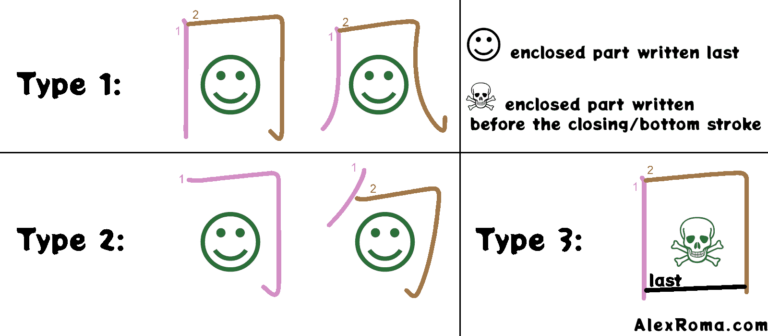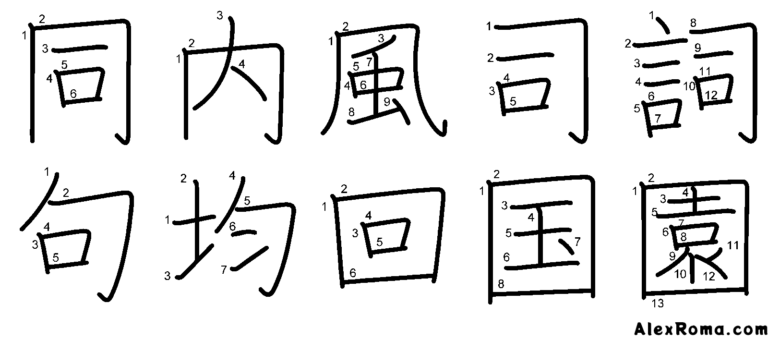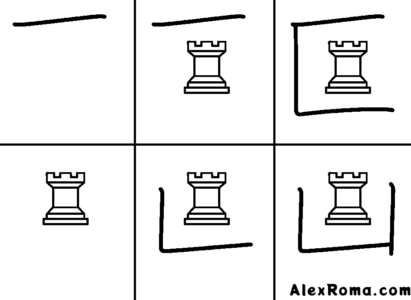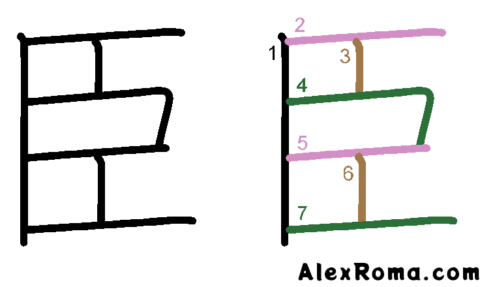Component order rule 3 – embracing enclosures
Embracing enclosure are shapes that act like fences surrounding, completely or partially, other shapes. Let’s start with the following three types of embracing enclosures: 冂 dougamae, 勹 tsutsumigamae, 囗 kunigamae and similar shapes.
- Type 1: surrounding left, top and right.
- Type 2: surrounding top and right.
- Type 3: surrounding all directions.

The component order is as follows.
- Type 1 and 2:
- the enclosure is written first;
- the enclosed part is written last.
- Type 3:
- the left, top and right parts of the enclosure are written first;
- the enclosed part is written second;
- the closing/bottom stroke is written last.
You can practice writing the following characters, paying attention to how the enclosures and the enclosed parts are written.

The next two embracing enclosures are 匚 hakogamae and 凵 ukebako.

- In 匚 hakogamae the order is:
- top stroke;
- enclosed part;
- descending right-angled stroke.
- In 凵 ukebako the order is:
- enclosed part;
- bottom right-angled stroke;
- right vertical stroke.
Practice writing the following kanji.

The character 胸 mune contains a 凵 ukebako enclosure within a 勹 tsutsumigamae enclosure!
The last embracing enclosure that we are going to discuss is the 門 MON ‘gate’ shape, which is a kanji on its own. A ubiquitous shape.
The 門 MON enclosure is written first in its entirety; the enclosed part is written last.
Some of the kanji with this enclosures are shown below.

The 門 MON shape is the pictogram (the drawing) of a gate.
The servant is not an enclosure
Let’s spend just a few words on the shape/kanji 臣 SHIN ‘servant’. This shape used to frustrate me before I decided to spend a moment to memorise its stroke order once and for all.

Once you study its stroke order, you’ll find out that this seemingly complicated shape is diligently following the basic stroke order rules that we already know: left to right, top to bottom.
The only particularity is that the first stroke is a vertical line, and everything else is written on its right, from the top to the bottom. What at first may have looked like a 匚 hakogamae enclosure was in fact something different and unusual.
The character 臣 SHIN, meaning ‘servant’, is the drawing of a large eyeball. In ancient China certain categories of people would sometimes have their eyes pierced with a big needle, thus becoming blind. They would participate in ritualistic divinatory practices as retainers/servants.
